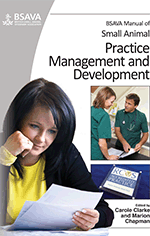
Full text loading...

The consulting area is the main area of contact of veterinary surgeons and veterinary nurses with clients and their pets. It is where small animal first opinion veterinary surgeons usually spend 4 or 5 hours a day and should be an area where vets, nurses and clients can feel comfortable and relaxed. This chapters covers consulting room design, animal handling, biosecurity in the consulting room and waste disposal.
Consulting rooms, Page 1 of 1
< Previous page | Next page > /docserver/preview/fulltext/10.22233/9781910443156/9781910443156.6-1.gif

Full text loading...

























